氢氧燃料电池流场结构设计及性能优化毕业论文
2020-04-15 16:50:17
摘 要
随着氢氧燃料电池应用越来越广泛,人们对其性能要求也越来越高,流场结构作为影响氢氧燃料电池性能的一个重要因素,结构的合理性至关重要。
本文介绍了氢氧燃料电池的发展状况并且阐述了以全氟磺酸膜,即Nafion膜为电解质的质子交换膜氢氧燃料电池的工作原理及各组成结构应用情况,进行了模拟研究,核心部分即对质子交换膜氢氧燃料电池流场的模拟与仿真。
模拟部分,针对不同流道,在COMSOL模拟软件上对氢氧燃料电池流场进行仿真,作出多组对照组,获得相应的速度场,浓度场分布图和极化曲线图,分析不同流道速度场、浓度场分布情况及其极化曲线。分析其性能优劣。得出蛇直混合流道在三种流道中表现最好。三种流道分别为:单蛇道流场、多蛇道流场,蛇直混合流场。其中阳极板均采用蛇直混合流道,阴极板分别采用单蛇道流场、多蛇道流场,蛇直混合流场。流道内部使用动量方程速度场,扩散层和催化成使用Brinkman方程;燃料电池中的物质传递,流道中使用连续性方程,多孔介质中使用M-S方程;电池内部通过二次电流分布表达电场,使用B-V方程将物质传递与电流密度相耦合。进出口流道选择速度边界条件;多孔介质,催化成选着无滑移边界条件;通过每一个组分的质量分数来描述混合物的成分和属性;在流道出口仅考虑对流不考虑扩散。
关键词:氢氧燃料电池 双极板 流场结构 电池
Abstract
With the increasing application of oxyhydrogen fuel cells, people's performance requirements are getting higher and higher. Flow field structure is an important factor affecting the performance of oxyhydrogen fuel cells. Its structural design and optimization have very good performance in improving battery performance. Significance.
This paper introduces the development of oxyhydrogen fuel cells and describes the working principle of the proton exchange membrane oxyhydrogen fuel cell with a perfluorosulfonic acid membrane, namely Nafion membrane as an electrolyte, and the application of each component structure. The simulation study is carried out. That is the simulation and simulation of the flow field of the proton exchange membrane oxyhydrogen fuel cell.
In the simulation part, for the different flow channels, the flow field of the oxyhydrogen fuel cell was simulated on the COMSOL simulation software, and multiple sets of control groups were made to obtain the corresponding velocity field, concentration field distribution map and polarization curve, and the different flow path speeds were analyzed. Field, concentration field distribution and its polarization curve. Analyze its performance. It is concluded that the serpentine mixed flow channel performs best in the three flow paths. The three types of flow channels are single serpentine flow field, multi-snake flow field, and snake-mixed flow field. The anode plates adopt a snake-mixed flow channel, and the cathode plates respectively adopt a single-snake flow field, a multi-snake flow field, and a snake-mixed flow field. The velocity field is internally used in the flow path, the diffusion layer and the catalysts are used in the Brinkman equation; the mass transfer in the fuel cell, the continuity equation in the flow channel, the MS equation in the porous medium, and the electric field inside the battery to express the electric field through the secondary current distribution. The BV equation couples mass transfer to current density. The inlet and outlet runners are selected for velocity boundary conditions; the porous media is catalyzed to select non-slip boundary conditions; the composition and properties of the mixture are described by the mass fraction of each component; only the convection at the outlet of the runner is not considered for diffusion.
Key words: Ionic membrane oxyhydrogen fuel cell; bipolar plate; flow field;Battery performance
目录
摘要 I
Abstract II
目录 4
第一章 绪论 5
1.1引言 5
1.2氢氧燃料电池简介 6
1.2.1 氢氧燃料电池工作原理 6
1.2.2氢氧燃料电池分类 6
1.2.3 氢氧燃料电池双极板及流场结构 7
1.3 质子交换膜氢氧燃料电池简介 10
1.3.1质子交换膜氢氧燃料电池膜电极 11
第二章 数值模拟方法 13
2.1软件介绍 13
2.1.1 COMSOL Multiphysics软件 13
2.2数值方法 14
2.2.1有限元法 15
2.3描述方程 15
第三章 建模过程 18
3.1构建物理模型 18
3.2物理场及相关参数设置 22
3.3网格划分 23
3.3.1介绍 23
3.3.2网格划分操作 24
第四章 模拟结果与分析 41
4.1 模拟结果 41
4.2 模拟分析 41
4.2.1电池极化曲线 41
4.2.2浓度场 42
4.2.3速度场 45
第五章 总结与展望 46
参考文献 46
致谢 47
第一章 绪论
1.1引言
氢氧燃料电池是一种电化学装置,能将氢气和氧气的化学能转化为电能,它的优点包括高能量转化效率、高比能量、高功率密度、低污染、低温启动等优点,在移动电源、小型固定发电站发电站、电动汽车、航空航天和军事邻域都有很好的应用前景[1],被认为是一种适合人类发展和环境要求的理想电源。
然而,流场结构作为一个比较关键的问题还在研究之中。流场在双极板上,双极板的体积占燃料电池的一半左右,质量占燃料电池一半以上。它在电池中的主要作用包括为阳极空气、阴极氢气及反应生成水提供进出通道、分隔还原剂和氧化剂、支撑膜电极、收集和传导电流等。而燃料电池的性能受流场结构的影响也很大,流场即双极板表面一片区域的沟槽,双极板上的流道设计对电池性能、运行效率和制造成本有很大影响[2]。没有恰当的流场结构,通入的反应物就不能很好的分布在与流道的接触面上,生成的废弃物也没有办法很好的排出电池 ,就会造成一些对电池性能的影响,电池内部的电流密度会不均匀,反应物的不均匀导致电池内部某一部分的反应物质浓度奇高或者奇低,流道的堵塞使电池内部热量积累,导致局部温度电池内部某区域温度过高。合理的流场设计可以很好地改善电池的性能。
氢氧燃料电池涉及多方面的知识,较为复杂,导致关于它的实验研究较为困难, 而建模仿真就容易得多。 随着时代的发展,人们对于氢氧燃料电池的建模仿真也越来越完善,从早期的一维数学模型,到后来的二维及三维数学模型,仿真变得越来越复杂完备。然而现在对多个物理场的仿真很少。 本文利用 COMSOL Multiphysics 对氢氧燃料电池流场进行了综合数值仿真,阳极板均采用蛇直混合流场,阴极板分别采用单蛇道流场、多蛇道流场及蛇直混合流场,通过对比,分析各流场结构下电池内部速度场、浓度场,电流密度的分布情况。
1.2氢氧燃料电池简介
1.2.1 氢氧燃料电池工作原理
氢氧燃料电池以氢气作燃料为还原剂,氧气作氧化剂,是一种将化学能转变为电能的电池[3]。反应后的生成物对环境的污染较小,只会生成热量和水,有时候可能会夹带排出一些未反应完全的反应气体。但是不可否认,氢氧燃料电池依然是一种受到普遍认可的一种清洁燃料电池。
以上是毕业论文大纲或资料介绍,该课题完整毕业论文、开题报告、任务书、程序设计、图纸设计等资料请添加微信获取,微信号:bysjorg。
相关图片展示:

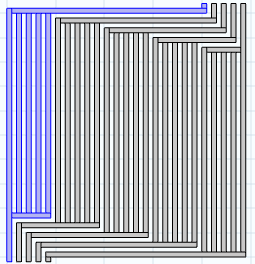
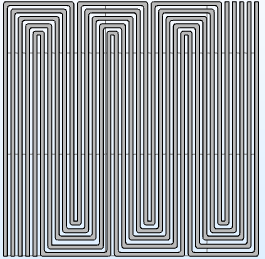
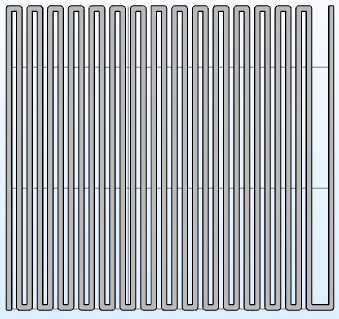
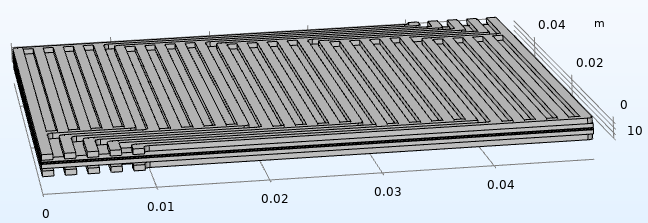
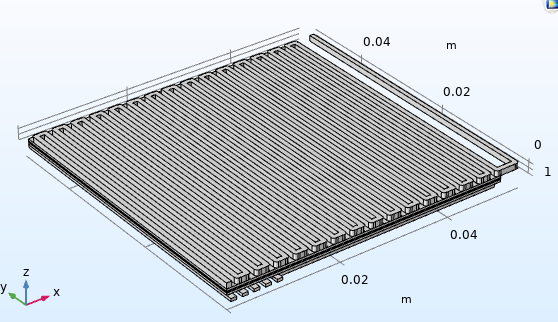
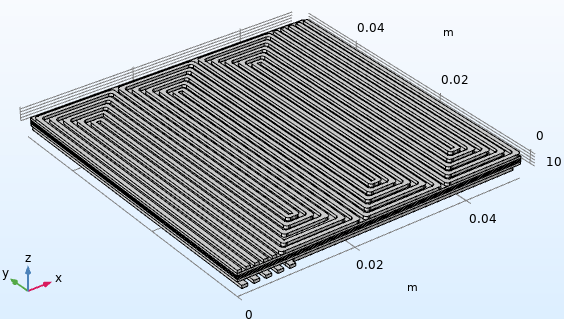
您可能感兴趣的文章
- 单分散胶体CdSe和CdSe/CdS核/壳纳米晶体的两步合成策略外文翻译资料
- 沥青及沥青混合料产生的沥青烟的实验室评价外文翻译资料
- 溶胶凝胶法制备二氧化硅-氧化锆抗碱涂层外文翻译资料
- InAs/GaAs量子点尺寸对能带结构影响研究毕业论文
- InAs/GaAs量子点垒层对能带结构影响研究毕业论文
- 应用于3500K热辐射源的热光伏电池研究毕业论文
- 高(010)活性晶面暴露的BiVO4晶体的合成、改性及其光催化性能研究毕业论文
- 多孔氮化碳(g-C3N4)的合成、改性及其光催化性能研究毕业论文
- C/Cu2ZnSnS4(CZTS)复合材料制备及其光催化性能研究毕业论文
- Bi2MoO6/Cu2ZnSnS4(CZTS)复合材料制备及其光催化性能研究毕业论文




